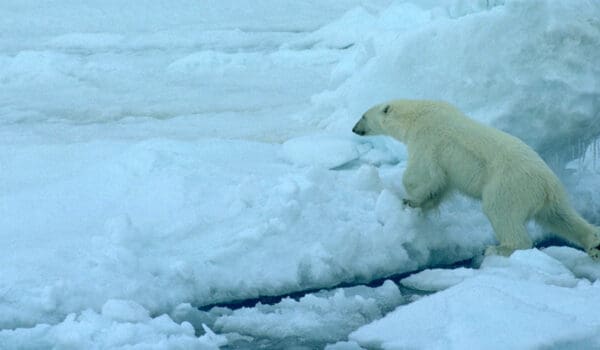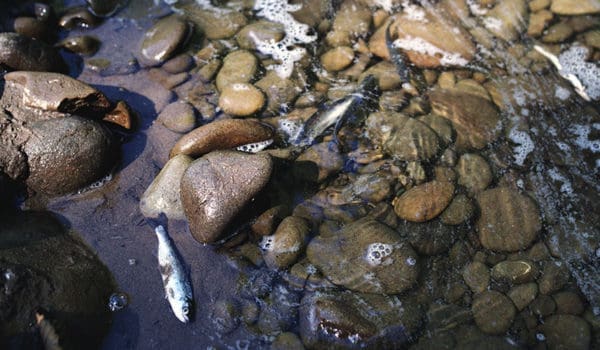From 2010 onwards, the climate debate occupies more and more space in our everyday life. Flood disasters and heat waves seem to constantly fill our TV screens, and countless readers discuss in the online newspapers’ comment feeds whether global warming is a fact or not.
In 2013 and 2014, the UN climate panel IPCC presented their fifth main report, stating that there is enough scientific evidence to prove continuous climate changes during the last centuries, but that the main changes have occurred since in the middle of the 20th century.
Climate consequences
Global average temperature has been rising, precipitation patterns have changed, sea temperature has become too warm and acidic in specific regions, permafrost is thawing, glaciers and Arctic sea ice are melting like never before and episodes with extreme weather occur more often than ever. Consequently, NILU decided to increase its research activities regarding economic and societal consequences based on different climate measures.
Nowadays the general population is far more concerned about climate and the consequences of human activities than just 20 or 30 years ago. Most people agree that anthropogenic emissions are most likely the dominating reason for global warming, and the commitment of both politicians and «laymen» to do something to stop this trend is quite high.
Important climate projects and activities at NILU from 2010
2010: During the eruption of Eyjafjallajökull, NILU’s research group for volcanic ash contributed with their FLEXPART-simulations of ash clouds spreading in the atmosphere. The simulations were precise enough to manoeuvre airplanes around the most affected areas. These simulations are now used world-wide to monitor the atmosphere during or after volcanic eruptions. As a consequence of continuously high levels of atmospheric methane over the Arctic in 2009, NILU starts the research project «Causes and effects of global and Arctic changes in the methane budget» as part of the Norwegian Research Council’s NORKLIMA program.
This little «movie» shows NILU’s first simulation of the ash cloud after the Eyjafjallajökull-eruption on 14 April 2010. It was published on 15 April, only one day after the eruption. Copyright: NILU
2011: NILU scientists state that measures to reduce emission of greenhouse gasses also – unintentionally – result in the reduction of a number of environmental pollutants. At the same time, measurements carried out at the Zeppelin observatory at Svalbard show that a large part of pollutants that until now have been bound to snow, ice and permafrost are released into the atmosphere because of rising temperature in the Arctic environments.

2012: In March, NILU scientists for the first time measure CO2-values of more than 400 ppm at Svalbard, and simultaneously find that the levels of other greenhouse gasses, such as methane, are also rising. But there seems to be light at the end of the tunnel: measurements carried out by NILU on behalf of Klif show that the levels of CFCs and HCFCs – ozone-depleting gasses – are dropping. Thus, 25 years after the ratification of the Montréal protocol, it is clear that the ozone layer is finally improving again.
2013: Due to research carried out by amongst others NILU, the UN member states agree upon reducing the use and emission of mercury in the so-called Minamata protocol. In the same year, NILU, CAGE and CICERO start their collaborative project “MOCA”, aiming to combine measurements from ship, airplane, seabed and air to find out how much of the methane that is stored in the seabed is actually emitted into the atmosphere. In addition, NILU receives funding for a “European Center of Excellence”, eSTICC. The centre aims to gather experts within climate and data treatment to develop tools that can contribute to an improved and interdisciplinary understanding of processes related to climate.
2014: IPCC presents their synthesis report where they emphasis the urgent need to reduce and adopt our emissions to reach the two-degree target. One way to diminish effects of global warming is to reduce CO2 emissions into the atmosphere; this would limit the consequences of climate changes for both environment and human health. In 2014, NILU participated in a number of different research projects, investigating both technologies that improve combustion effects, and technologies that lead to a reduction of CO2 emissions from flue gas, so called CCS-technologies.
2015: King Harald V visits Trollhaugen in Antarctica, and in the same year, the NILU-lead ECLIPSE project states that measures to decrease short-lived climate drivers such as methane and soot could also contribute to a reduction of the global average temperature. In addition, the Norwegian Research Council approves funding for the project ICOS-Norge, where NILU participates in efforts on long-term observations of greenhouse gasses, understanding of emissions and their regional dynamics to evaluate the effects of different mitigation measures.




